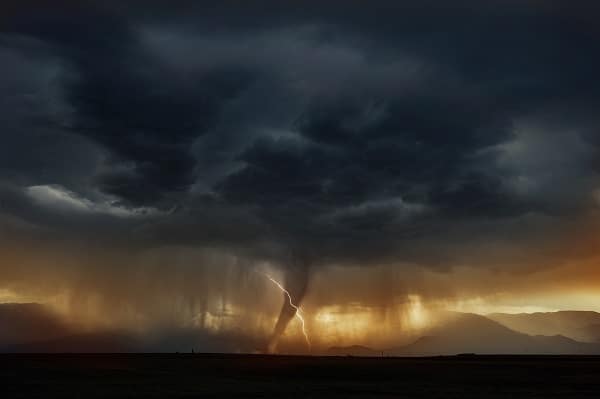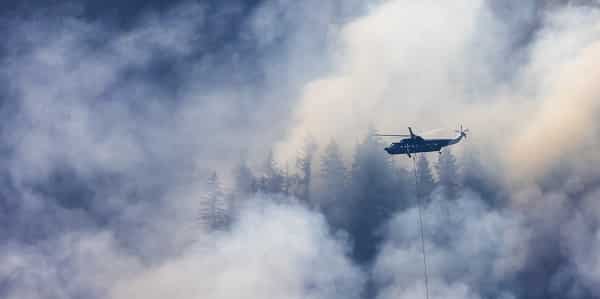Disaster preparedness is a vital aspect of safety and well-being for individuals and communities across the United States. The U.S. has a diverse geography and climate and is prone to various natural and human-made disasters. From earthquakes on the West Coast to hurricanes along the Gulf, understanding the risks and knowing how to prepare can save lives and minimize damage. This article will educate readers on the most likely disasters they may face and provide essential tips and strategies for preparation. The goal is to empower everyone to take proactive steps to ensure safety and resilience.
Contents
Earthquakes

Earthquakes are common in certain regions of the U.S., particularly along the West Coast and Alaska. Understanding the risks and having an emergency plan can significantly affect safety. Basic preparedness tips include:
- Securing heavy furniture.
- Having an emergency kit ready.
- Knowing safe spots in your home.
Building codes and construction practices have evolved to minimize damage, but personal preparedness remains crucial. Awareness and readiness can help reduce panic and injury during an unexpected quake.
Hurricanes

Hurricanes pose a significant threat to the Atlantic and Gulf Coast states. These powerful storms can cause widespread destruction through strong winds, heavy rainfall, and storm surges. Knowing the seasonal patterns and having an evacuation plan is essential for those living in hurricane-prone areas. Staying informed through weather updates, securing property, and having an emergency kit can make evacuation smoother and safer. Community coordination and adherence to local authorities’ guidelines are vital in minimizing risks and ensuring a timely response.
Tornadoes

Tornadoes are most common in the Midwest and Southern states, where they can strike with little warning. Recognizing the warning signs of a tornado, such as a dark, greenish sky or a loud, continuous roar, is the first step in taking shelter. Designating a safe room or storm cellar and having an emergency kit ready can save lives. Staying informed through weather radios and understanding community warning systems are also essential. Coordination with neighbors and local authorities can enhance community resilience and provide support during and after a tornado event.
Wildfires

Wildfires are a recurring threat in the Western states, where dry conditions and strong winds can quickly spread flames. Understanding the fire seasons and taking preventive measures like clearing flammable vegetation can protect homes and lives. Creating a defensible space around properties, using fire-resistant building materials, and having an evacuation plan are essential. Staying informed through local authorities and having an emergency kit ready can make evacuation smoother and more efficient. Collaboration with neighbors and community organizations can enhance preparedness and provide support during a wildfire event.
Wildfires have become more frequent and intense in recent years, affecting even urban areas. Climate change and human activities are contributing factors that increase the risks. Public awareness campaigns, adherence to local fire restrictions, and responsible outdoor behavior can minimize accidental fires. Investing in home protection and understanding insurance coverage are also vital. Preparedness and vigilance can help communities withstand and recover from devastating wildfires.
Floods

Floods are common in coastal and inland areas across the U.S. and can occur with little warning. Elevating electrical systems, using flood-resistant materials, and having an emergency kit can minimize water damage. Staying informed through weather updates and adhering to local authorities’ evacuation orders are essential. Coordination with neighbors and community organizations can enhance resilience and provide support during a flood event.
Flood risks are not limited to areas near bodies of water; flash floods can occur almost anywhere. Urban development, changing weather patterns, and inadequate drainage systems can exacerbate flooding risks. Public awareness, community planning, and responsible land use can mitigate these risks. Investing in flood protection measures and understanding insurance coverage are also vital. Preparedness and community engagement can help individuals and neighborhoods withstand and recover from unexpected flooding.
Blizzards and Winter Storms

Blizzards and Winter Storms are common in the Northern states, where they can disrupt daily life and pose safety risks. Preparing vehicles with winter supplies, insulating homes, and having an emergency kit can make winter weather more manageable. Staying informed through weather updates and avoiding unnecessary travel during storms is vital. Coordination with neighbors and local authorities can enhance community resilience and support during severe winter weather.
Winter storms are not just about snow; ice, freezing rain, and extreme cold can also pose risks. Proper clothing, awareness of frostbite and hypothermia symptoms, and safe heating practices are essential for personal safety. Community resources, such as warming centers and snow removal services, support vulnerable populations. Schools, businesses, and public services must also have plans to ensure safety and continuity during winter weather. Collaboration and preparedness can help communities navigate the challenges of winter and minimize risks.
Heatwaves

Heatwaves are a growing concern in the Southwest and Southeast regions, where extreme temperatures can lead to serious health issues. Understanding heat-related illnesses and having a cooling plan is essential for hot climates. Staying hydrated, avoiding strenuous activities during peak heat, and having access to air conditioning can prevent heat-related problems. Public cooling centers and community support can assist those without adequate cooling at home. Coordination with local health authorities and awareness campaigns can enhance community resilience during heat waves.
Climate change contributes to more frequent and intense heat waves, affecting even traditionally cooler areas. Urban development and lack of green spaces can create “heat islands” that exacerbate the problem. Public awareness, community planning, and responsible land use can mitigate these risks. Investing in energy-efficient cooling and understanding the needs of vulnerable populations, such as the elderly and those with chronic health conditions, are also vital. Preparedness, adaptation, and community engagement can help individuals and neighborhoods withstand and recover from extreme heat events.
Technological and Accidental Hazards

Technological and Accidental Hazards, such as nuclear power plant incidents or hazardous material spills, can pose significant risks to nearby communities. Staying informed about potential risks, knowing evacuation routes, and having an emergency kit can make the response more efficient. Coordination with local authorities and adherence to safety guidelines are vital in minimizing risks. Community engagement and public awareness can enhance preparedness and provide support during an unexpected technological or accidental hazard.
In an increasingly interconnected and technological world, the risks associated with technological and accidental hazards are growing. Infrastructure failures, cyber-attacks, and industrial accidents can have widespread impacts. Public awareness, responsible corporate behavior, and robust regulatory oversight can mitigate these risks. Investing in resilient infrastructure and understanding community vulnerabilities are also vital. Preparedness, vigilance, and collaboration between public and private sectors can help communities withstand and recover from technological and accidental hazards.
Pandemics and Infectious Diseases

Pandemics and Infectious Diseases are a nationwide concern that can disrupt daily life and strain healthcare systems. Staying informed through health authorities, practicing good hygiene, and having access to medical supplies can prevent the spread of diseases. Coordination with healthcare providers and adherence to vaccination guidelines are vital in minimizing risks. Community engagement and public awareness can enhance preparedness and support during a pandemic or infectious disease outbreak.
In a globalized world, the risks associated with pandemics and infectious diseases are more pronounced. Travel, trade, and urbanization can accelerate the spread of diseases. Public awareness, international cooperation, and robust healthcare systems can mitigate these risks. Investing in research, understanding the needs of vulnerable populations, and having a coordinated national response is also vital. Preparedness, adaptation, and community engagement can help individuals and communities withstand and recover from pandemics and infectious diseases.
Terrorism and Human-made Disasters

Terrorism and Human-made Disasters are concerns in urban areas and places of significant public gathering. Coordination with local authorities, reporting suspicious activities, and having an emergency response plan can minimize risks. Community engagement and public awareness can enhance preparedness and provide support during an unexpected terrorist attack or human-made disaster.
In a complex and interconnected world, the risks associated with terrorism and human-made disasters are multifaceted. Ideological conflicts, political instability, and social tensions can contribute to these risks. Public awareness, responsible governance, and international cooperation can mitigate these challenges. Investing in security measures, understanding community vulnerabilities, and having a coordinated response is also vital. Preparedness, vigilance, and collaboration between communities and authorities can help urban areas withstand and recover from terrorism and human-made disasters.
Building a Resilient Future Through Preparedness
The diverse geography and complex society of the United States exposes its citizens to a wide array of potential disasters, ranging from natural phenomena to human-made threats. Understanding these risks and taking proactive steps to prepare can significantly affect safety, well-being, and resilience. This blog post has aimed to provide a comprehensive guide to the most likely disasters in the U.S., offering practical tips and regional considerations. The goal is to empower individuals and communities to take control of their safety and work together to build a more resilient nation. Whether facing a hurricane on the coast or a heatwave in the desert, preparedness is the key to survival and recovery.


